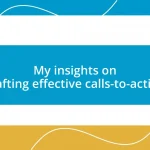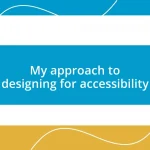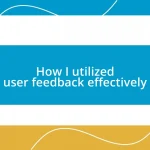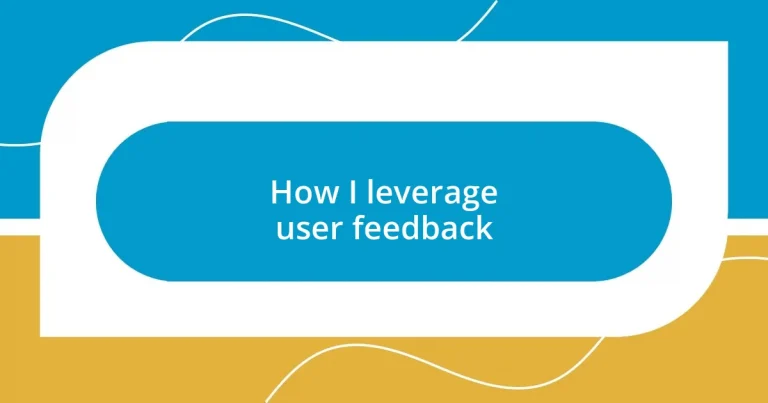Key takeaways:
- User feedback is essential for understanding user needs and enhancing product development; it can reveal crucial insights that shape better user experiences.
- Effective collection of feedback involves open communication, utilizing various platforms, and simplifying the process to encourage user participation.
- Analyzing both quantitative and qualitative feedback helps identify patterns, allowing for informed decisions that prioritize user satisfaction and emotional connection.
- Communicating updates transparently and acknowledging user contributions fosters a sense of community and enhances user engagement with the product.
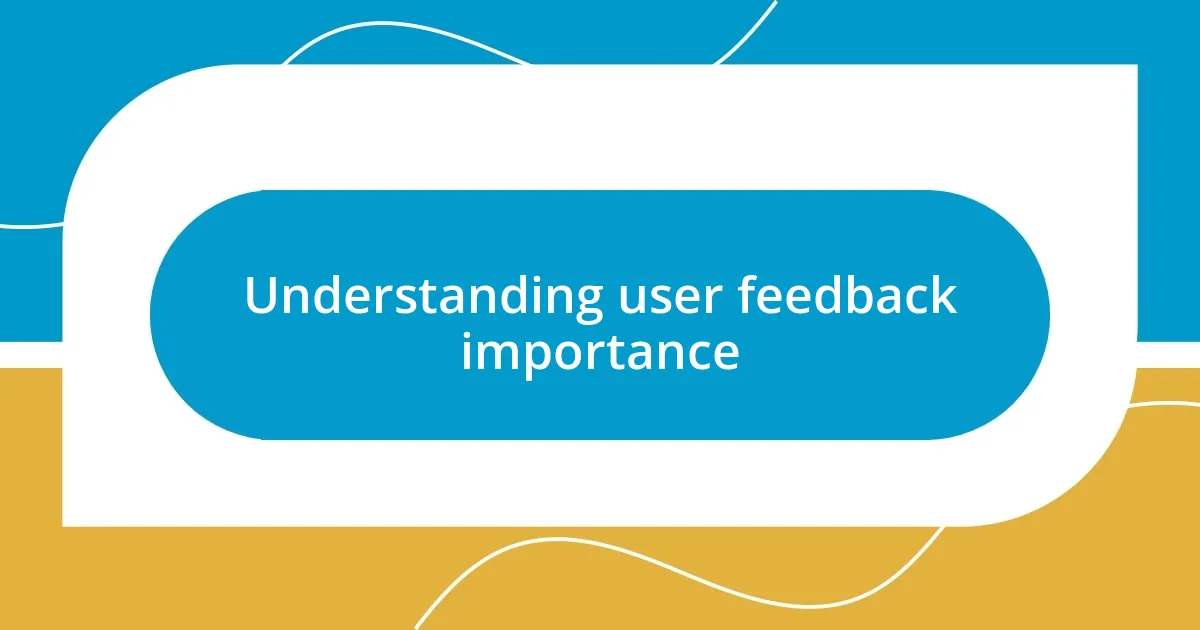
Understanding user feedback importance
User feedback is crucial because it serves as a mirror reflecting your audience’s true needs and expectations. I remember a time when we launched a feature that we thought was groundbreaking, only to find out through user feedback that it was confusing. This experience taught me that assumptions can be deceptive; listening to my users offers clarity that my own perspective simply cannot provide.
Engaging with user feedback feels like uncovering hidden treasures. Each comment or rating reveals insights about the user experience that can help steer development in more meaningful directions. Have you ever considered how an overlooked piece of feedback could potentially alter the trajectory of your product? I often think about how one small suggestion from a user led us to adjust our interface, resulting in an increase in user satisfaction and retention.
The emotional weight of user feedback shouldn’t be underestimated; it can be the difference between a loyal customer and a lost one. I vividly remember receiving a heartfelt message from a user who felt truly heard after we implemented changes based on earlier feedback. This connection not only reinforced my passion for seeking out user insight but also highlighted that these conversations can lead to deeper relationships—after all, who wouldn’t want to feel valued and understood?
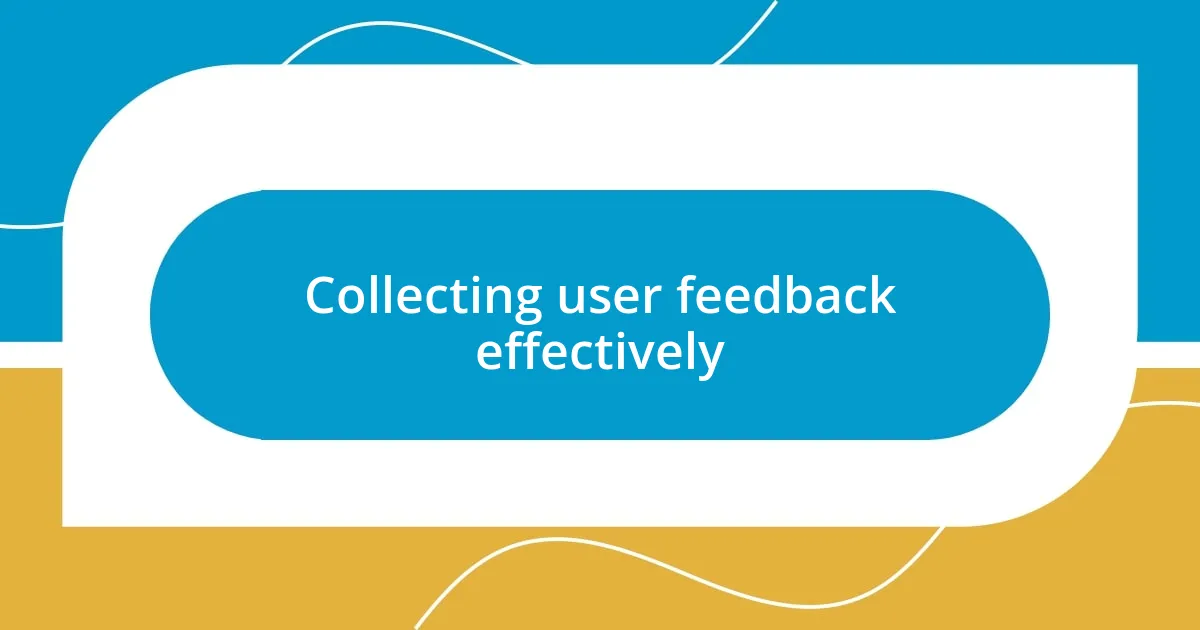
Collecting user feedback effectively
Collecting user feedback effectively is all about creating an open channel for communication. In my experience, I’ve found that the method of soliciting feedback can greatly influence the type and quality of responses you receive. For instance, during a recent project, I conducted a simple online survey supplemented with direct interviews. The combination revealed nuances in user sentiment that the survey alone wouldn’t have captured. It’s these layers of understanding that truly guide development efforts.
Here are some strategies that have worked for me when collecting user feedback:
- Ask open-ended questions: Encourage users to express their thoughts fully instead of limiting them to “yes” or “no” answers.
- Utilize varied platforms: From social media polls to in-app feedback tools, different mediums can reach different segments of your audience.
- Make it easy: Simplifying the feedback process—think quick rating systems or short comment boxes—can increase participation rates significantly.
- Follow up: When users see that their feedback is valued and acted upon, they’re more likely to continue sharing their thoughts.
In a specific instance, I reached out to a group of beta testers after they’d used our new feature. I was surprised by how willingly they shared their experiences, but what struck me most was the emotional tone in their responses. One tester mentioned how a particular update made her feel more engaged, sparking a deeper appreciation for the product. This taught me that we’re not just gathering data but also fostering a community around shared experiences and aspirations.
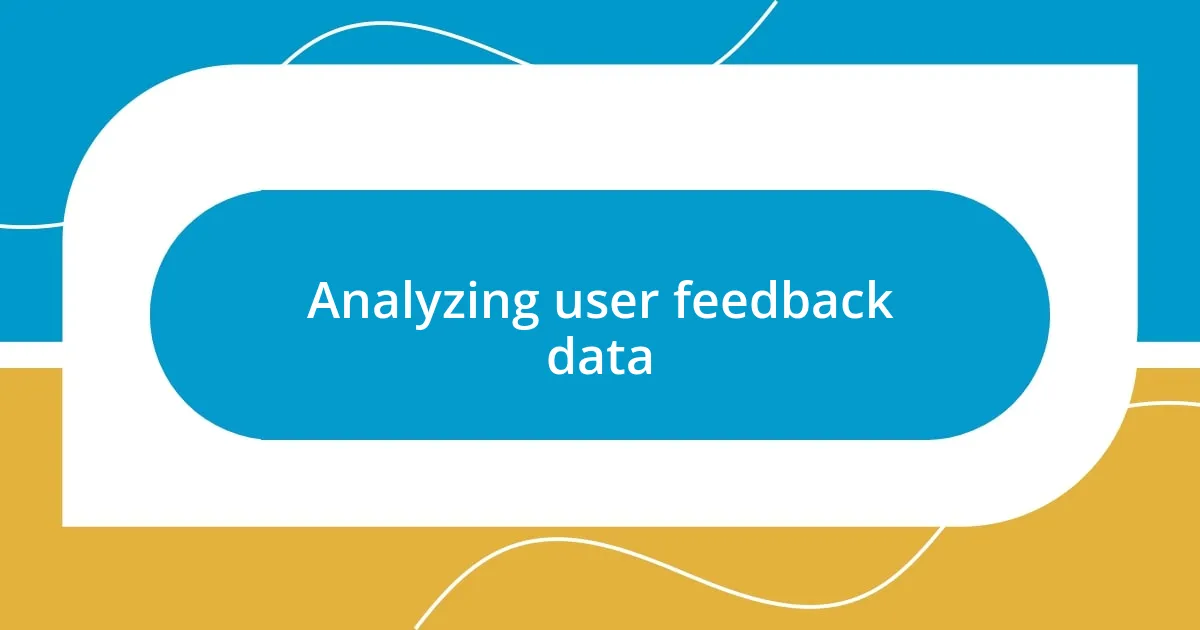
Analyzing user feedback data
Analyzing user feedback data is where the magic truly happens. Whenever I sift through feedback, I try to identify patterns and recurring themes. This part of the process always feels like piecing together a puzzle that reveals how users interact with my product. I recall a project where analyzing negative feedback helped us uncover an unexpected issue with our onboarding process. It was a moment of clarity that transformed confusion into actionable steps, leading to a smoother experience for new users.
As I dive into the numbers, I often find myself comparing quantitative data against qualitative insights. For example, while a significant drop in engagement metrics pointed to a problem, the comments from users painted a vivid picture of their frustrations and desires. In one case, after noticing a drop in usage, I analyzed user feedback, which revealed that a feature we deemed successful was, in fact, causing confusion. Engaging with both sets of data gave me a holistic view, allowing for more informed decisions that catered directly to user needs.
Here’s the part that’s always exciting for me: creating actionable strategies based on that analyzed data. I keep a close eye on user suggestions and prioritize them in our development backlog. When we implemented a feature that was consistently requested, the positive response was incredible! The emotion expressed in user feedback can be exhilarating. I’ve had users reach out, thanking us for listening—feeling like their needs were finally being met. That moment of connection reinforces why I’m so passionate about making data-driven decisions.
| Data Type | Description |
|---|---|
| Quantitative Feedback | Numerical ratings, engagement stats, or survey results that provide measurable insights into user behavior. |
| Qualitative Feedback | Written comments and suggestions that reveal user attitudes, emotions, and contextual experiences. |
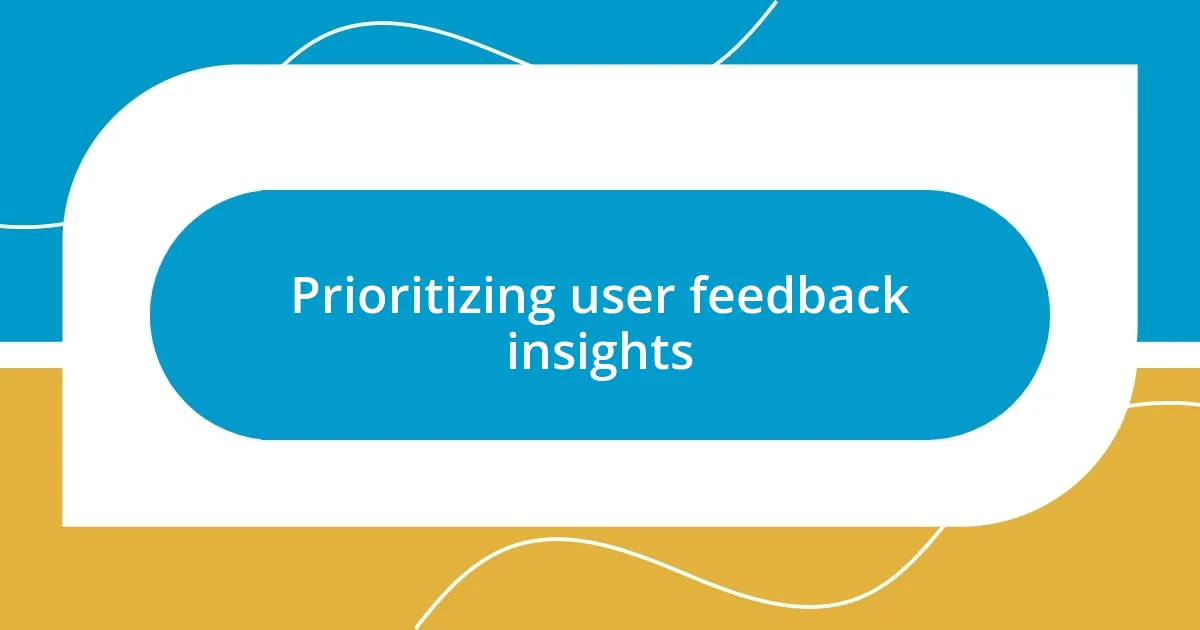
Prioritizing user feedback insights
When I prioritize user feedback insights, I often ask myself: what truly matters to my users? In one project, I encountered a wealth of feedback regarding a feature that seemed to stumble in usability. While the volumes of data from a survey indicated dissatisfaction, it was the direct stories behind the numbers that captivated me. A user shared not just their struggle but their hope for how this feature could make their daily tasks easier. That personal connection pushed me to elevate that feedback higher on my list.
I find that not all feedback carries the same weight. For example, if multiple users express frustration about a specific function, I take that very seriously. It reminds me of a situation where several users voiced concerns about loading times. Rather than dismissing it as an occasional complaint, I prioritized it because I could sense a larger sentiment at play. Prioritization, in this sense, is about recognizing the emotional undercurrents and understanding user priorities. This helps me align development focuses with what resonates with our audience.
It’s fascinating how prioritizing user feedback can drive real change. There was a time when we faced a crossroads—should we enhance an existing feature or develop a new one based on user requests? After analyzing the feedback, the majority of users wanted improvements on the current tool. Their testimonies were ripe with emotion, detailing the value it brought to their workflows. Listening closely and prioritizing their voices led to a decision that not only increased user satisfaction but solidified their belief in our commitment to improvement. Isn’t it amazing how prioritizing can create a direct line of impact on user experience?
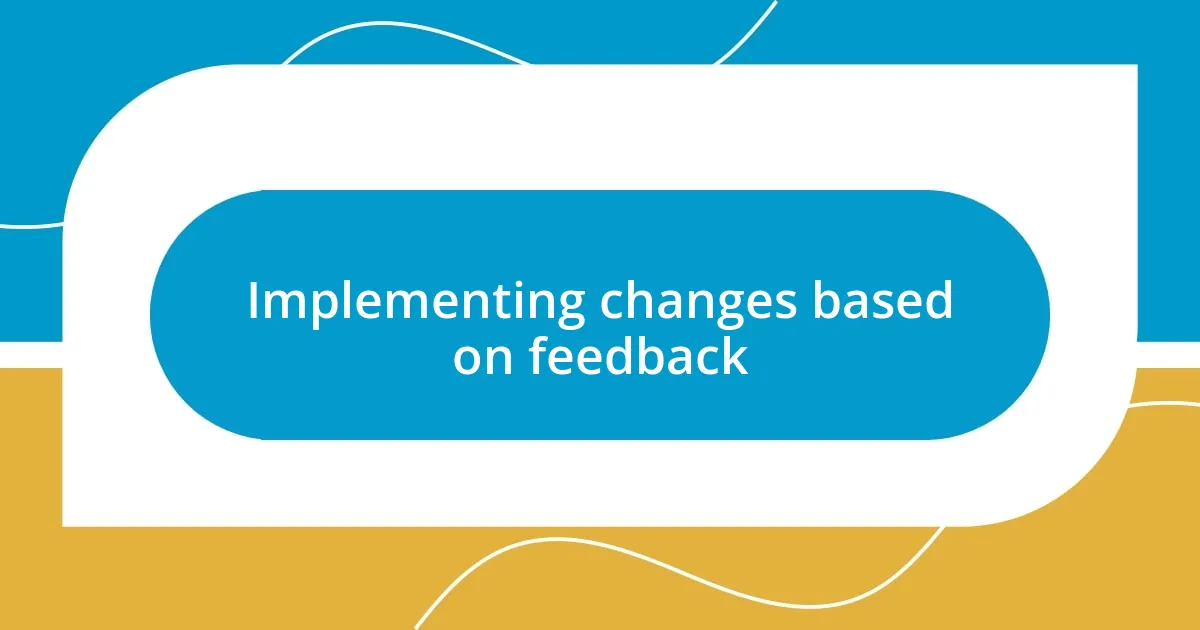
Implementing changes based on feedback
When it comes to implementing changes based on feedback, I find that communication is key. For instance, after gathering insightful user feedback on a mobile app I was working on, I led a brainstorming session with my team to discuss the changes we could make. It was electrifying to witness our ideas flowing in response to users’ perspectives, ultimately leading us to enhance the app’s navigation—a change that users had been desperately urging us for. Have you ever felt that rush when you know you’re about to make something better for others?
Taking feedback and translating it into tangible changes can be a daunting task, but I’ve learned to embrace it wholeheartedly. A memorable experience occurred when we redesigning our website’s layout based on user complaints about clutter. After launching the updated version, I watched a user demo video, and hearing their renewed enthusiasm reminded me why our hard work mattered. It was as if their previous frustration had been replaced with pure delight; moments like these reinforce my belief that real change can stem from genuine listening.
I also believe that once changes are implemented, it’s crucial to keep the feedback loop alive. After rolling out updates, I actively sought out users’ responses. For example, I initiated a post-launch survey to gauge how the new navigation system resonated with them. The feedback was a mixture of appreciation and constructive criticism, but what stood out to me was how eager users were to share their experiences. Their willingness to engage in the process motivated me to keep moving forward with confidence, knowing we were nurturing a collaborative relationship. Isn’t it incredible how that dialogue can transform not just a product but the entire user experience?
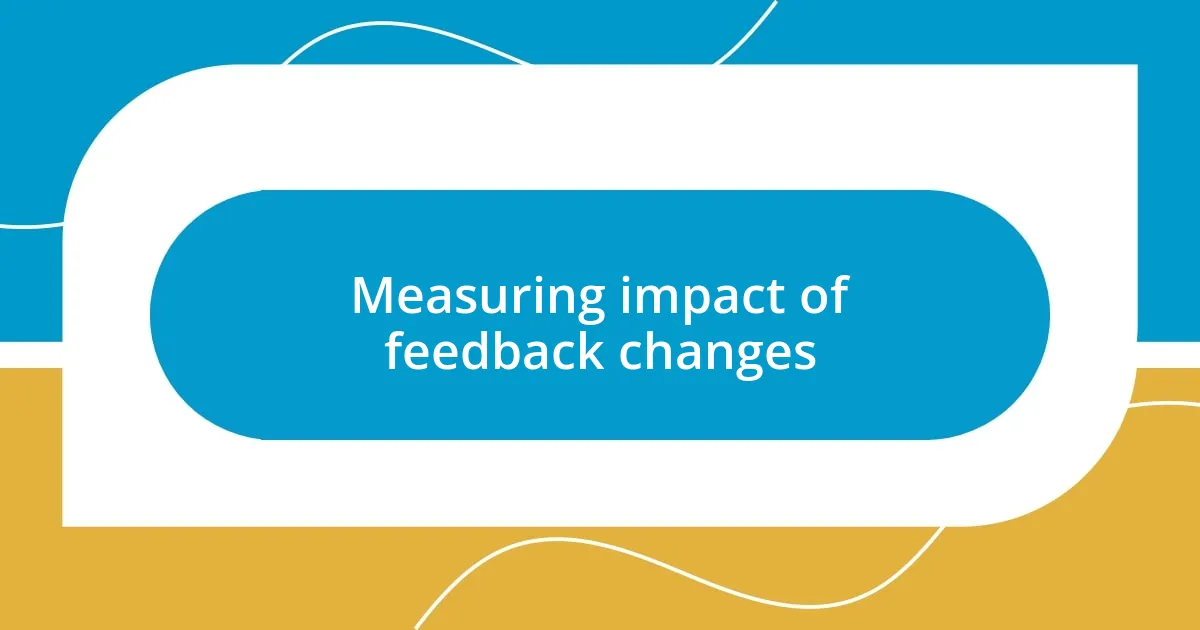
Measuring impact of feedback changes
When I evaluate the impact of changes made from user feedback, I often rely on a combination of metrics and personal observations. One time, after we revamped a frequently used tool based on direct user comments, I noticed a significant uptick in user engagement metrics. But it wasn’t just the numbers that mattered; watching users test the new features during a session and seeing their delighted reactions was invaluable. Have you ever experienced that moment where you realize the changes you made are genuinely resonating?
Quantitative data is essential, but I find qualitative feedback equally enlightening. After revising a notification system based on user input, I decided to conduct a follow-up interview with a few users. Listening to their positive reflections on how the changes enhanced their experience was a reminder that metrics alone don’t tell the whole story. It made me appreciate the nuances of their journeys—how a simple tweak could evoke feelings of clarity and satisfaction. Isn’t it fascinating how a deeper understanding of user sentiment can illuminate the path toward even greater improvements?
Moreover, I always emphasize the importance of continuous assessment. Following a major update, I kept the lines of communication open and invited users to share their thoughts over a few weeks. One user’s comment stuck with me: “I feel like you’re really listening now.” That acknowledgement of change reminded me how vital it is to not just implement feedback, but also to verify its impact. It confirms that we’re not just modifying features; we’re nurturing a relationship that values each user’s voice. Wouldn’t you agree that this kind of connection is what keeps both the product and its users thriving?
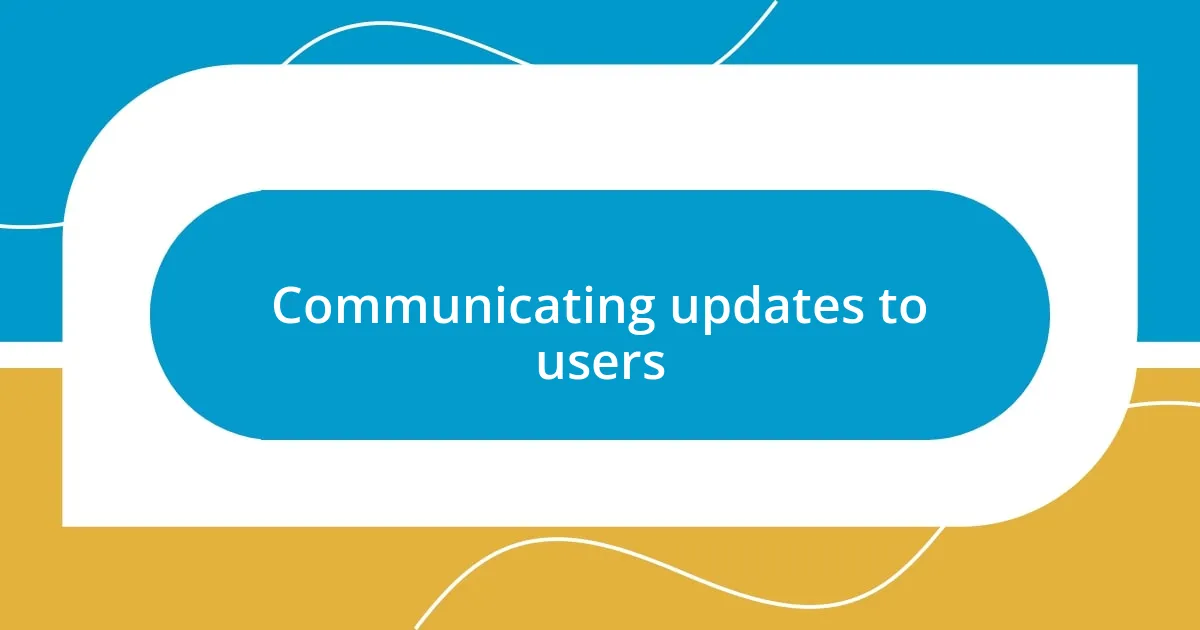
Communicating updates to users
Keeping users in the loop after updates is something I genuinely value. I remember when we rolled out a significant update to our app, I created a detailed blog post explaining not just what changed, but why we made those decisions based on user feedback. This effort sparked a conversation in the comments section, where users expressed their thoughts enthusiastically. Have you ever engaged in a dialogue where it felt like you were building something together?
I also utilize direct communication channels to announce updates effectively. One time, I organized a live Q&A session shortly after launching new features. Users shared their initial reactions, and it was thrilling to witness real-time engagement. I could answer their questions, address concerns, and even take notes on additional feedback. This experience taught me that being transparent and accessible fosters a sense of community. Don’t you think that kind of interaction makes users feel more invested?
Additionally, I make it a point to acknowledge users’ contributions explicitly when announcing improvements. After implementing changes based on user suggestions, I sent out personalized emails thanking users for their input. It’s amazing how a simple note of appreciation can deepen their relationship with the product. I still recall a heartwarming response I received from one user expressing gratitude for being heard. Isn’t it rewarding to know that a few words can encourage and motivate your audience?






